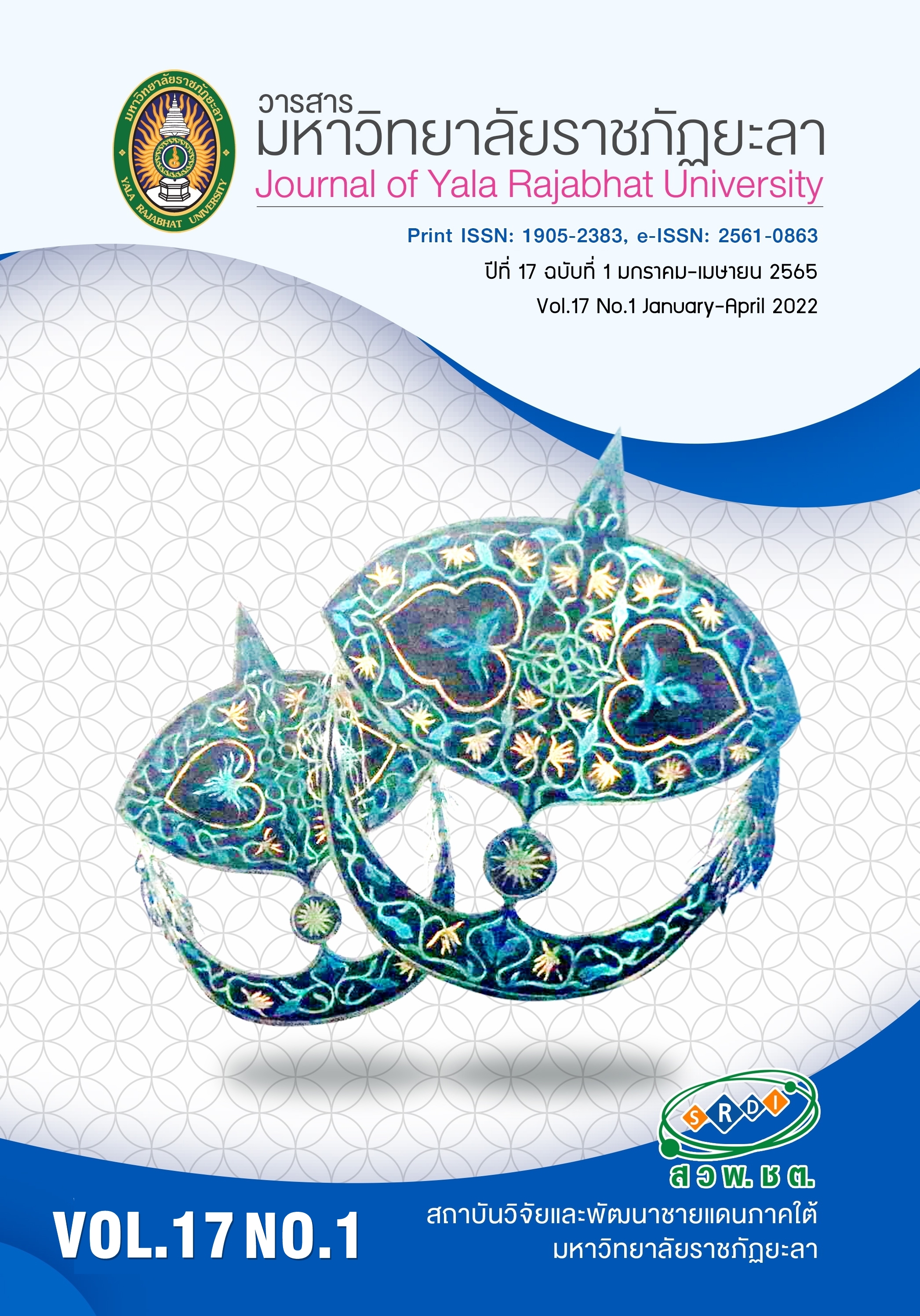The Development of Folklore Teaching Approach by Creative Integration of Active Learning and Folklore Narratives for Enhancing Students’ Outcomes in the 21st Century
Main Article Content
Abstract
Folklore assimilates folklife but students misunderstand the concept of folklore. Thus, the purposes of this research were to 1) study the information for developing the Folklore Teaching Approach. 2) Develop the Folklore Teaching Approach. 3) Study students’ outcomes in the 21st century and 4) disseminate the result of research. The sample group for testing was the 2nd year students majoring in Thai language teaching, faculty of Education, Silpakorn University 2020 academic year. The sample group for dissemination was the upper secondary students in mathayom 5 of the Demonstration School of Silpakorn University 2020 academic year. Research instruments were ability test, opinion reflection form and questionnaire. The mean, standard deviation, t- test dependent and content analysis were used to analyze the data. The research findings were; 1) The results of study information found 3 problems about teaching folklore subject includes learning medium, tasks about field-work presentation and understanding folklore concept. 2) The results of developing the Folklore Teaching Approach comprised 6 steps: 1) Motivate 2) experience through narrative 3) group discussion 3.1) summarize the concept 3.2) write the narrative 4) present the narrative 5) criticize the narrative 6) students’ reflections. The results of writing the folklore narratives for using as a medium in classroom, the researcher wrote 5 mini books; collected contents of folklore from Phetchaburi province in Thailand and India. 3) The results of students’ outcomes in the 21st century were higher than before using the folklore teaching approach with .05 level of statistical significance. About students ’opinion reflection, students reflected the benefits of this approach included: 1) enhance learning management 2) get an idea to teach and create teaching media 3) enhance the relationship in the family 4) raise awareness and grasp folklore or culture values and. 4) The results of dissemination by studying the upper secondary students’ opinions about folklore narrative writings found the highest opinions about advantages of folklore narratives.
Article Details

This work is licensed under a Creative Commons Attribution-NonCommercial-NoDerivatives 4.0 International License.
Copyright Notice articles, information, images, etc. was published in this Journal of Yala Rajabhat University is a copyright of the journal Yala Rajabhat University. If any person or deparment wants to bring all or part of it for publish or take any action. Authorization is required in written form from the Journal of Yala Rajabhat University only.
References
Anuntasarn, S. (2000). Contemporary folklore theories. Bangkok: Ramkhamhaeng University. (in Thai)
Bouttell, L. (2018). Creative Integration: A case study of cultural learning from Estonia [Online]. Retrieved April 2, 2020, from: https://epale.ec.europa.eu/sites/default/files/case_study_of_creative_integration.pdf.
Degh, L. (1972). Folk Narrative. In Dorson, R. M. (Ed.). Folklore and folklife. Chicago: The University of Chicago Press.
Lindahl, C. (1979). A Basic Guide to Fieldwork for Beginning Folklore Students. Folklore Monograph Series, 7, 60-69.
Michael and Modell. (2003). Active learning in secondary and college science classrooms: A working model for helping the learner to learn. Mahwah: Lawrence Associates, Inc.
Na Thalang, S. (2009). The folklore theory: methodology to analyze legend and the folktale. Bangkok: Chulalongkorn University. (in Thai)
Oring, E. (1986). Folk Groups and Folklore Genres. USA: Utah State University Press.
Wongyai, W. & Patphol, M. (2019). Creative Integration.Bangkok: Innovation Leaders Center in Curriculum and Learning, the Graduate School of Srinakharinwirot University. (in Thai)
Wongyai, W. & Patphol, M. (2019). Active Deep Learning. Bangkok: Innovation Leaders Center in Curriculum and Learning, the Graduate School of Srinakharinwirot University. (in Thai)


